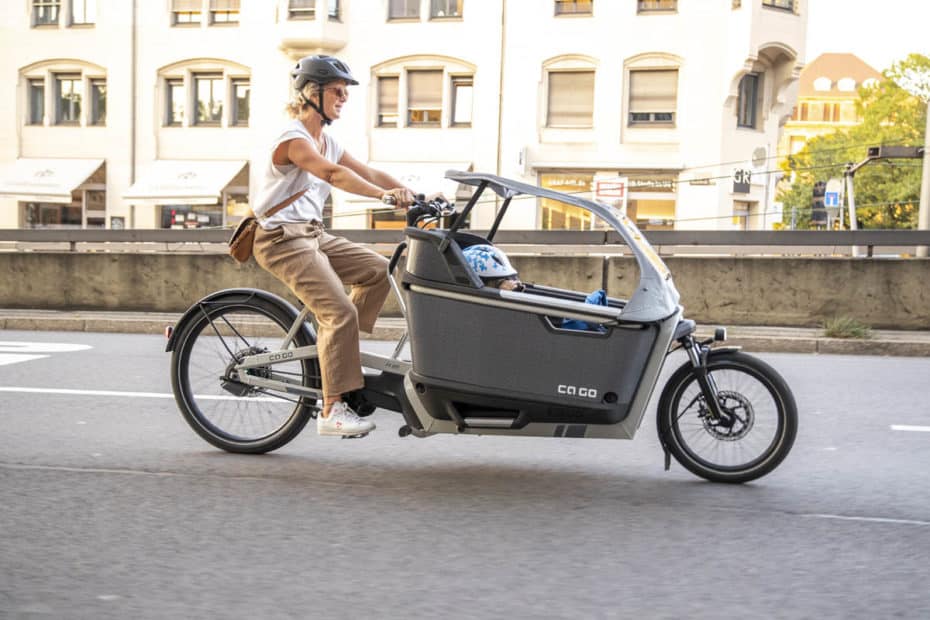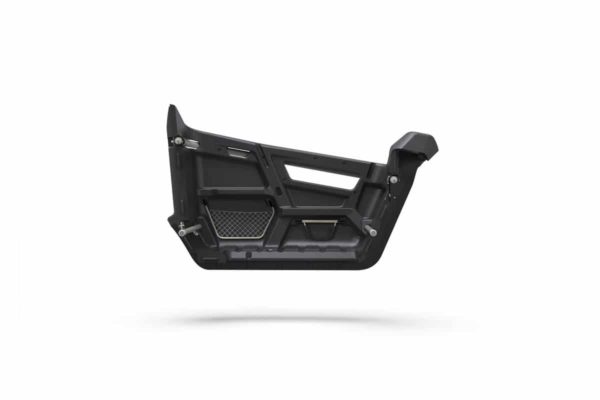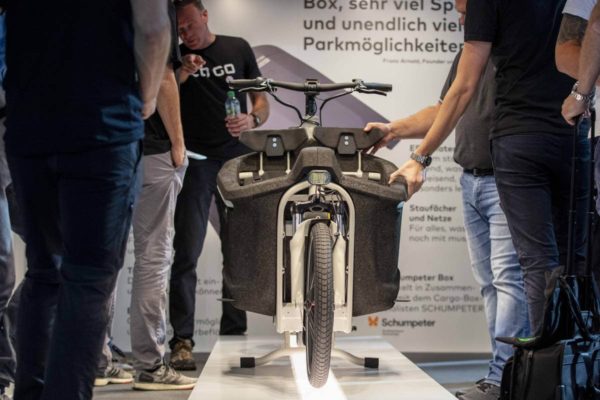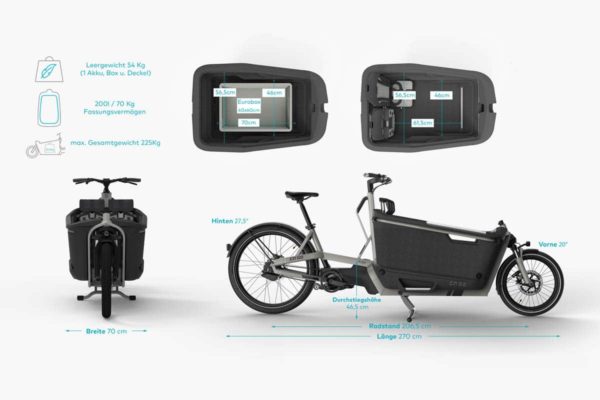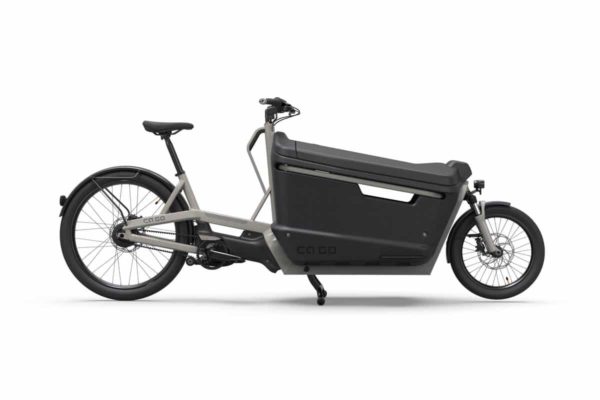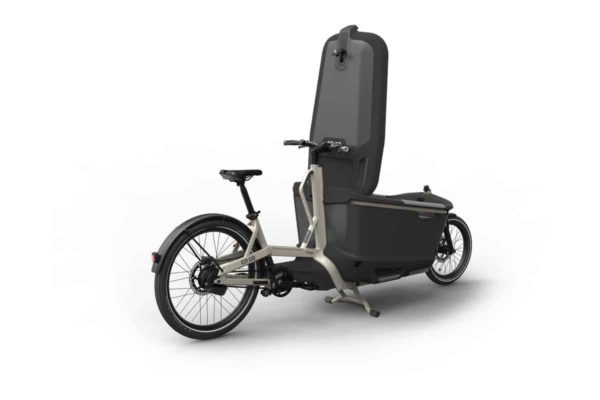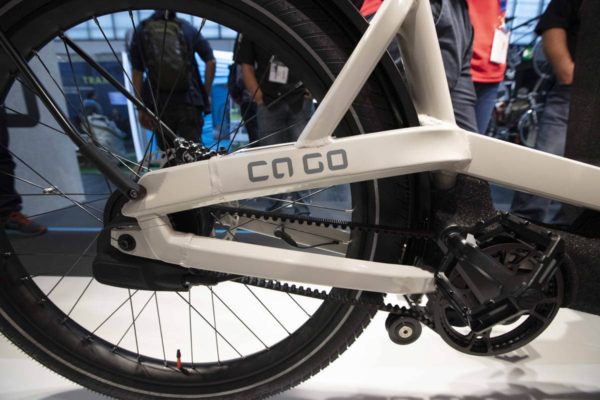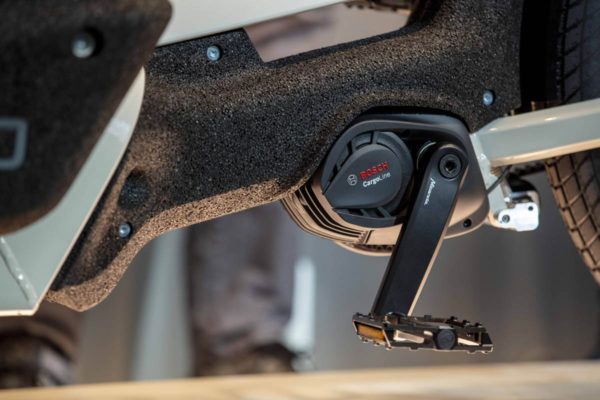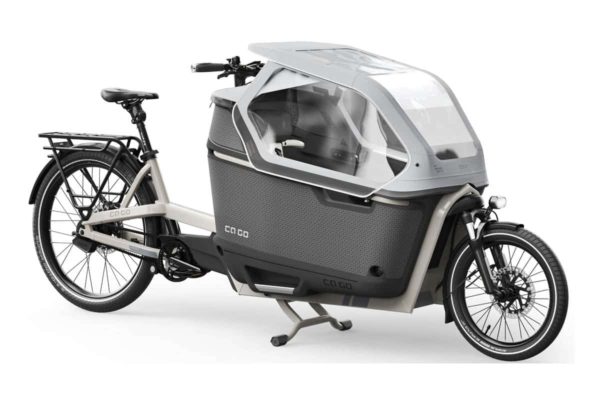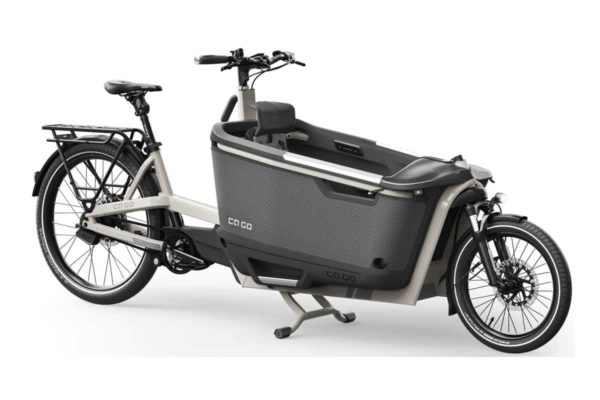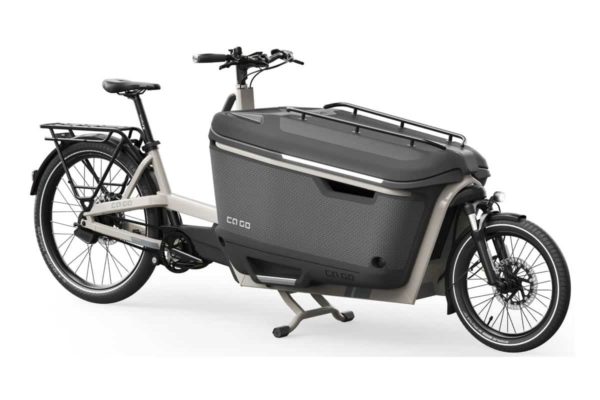Imagine a room where the following actors come together: A specialist in tools and moulds that can be used to process plastics. A former cyclist who now runs a bicycle brand that designs bikes for the most extreme demands. There is someone who can creatively handle a lightweight material like particle foams. There is an experienced specialist bicycle dealer who focuses on premium brands. The group is completed by a specialist in ergonomically designed contact points on the bike like grips and handlebars. What do these people put together? Okay, a cargo bike. Given the cover picture and the headline, it wasn’t hard to guess. However, the FS 200 from Ca Go is not just any cargo bike.
1. Around-the-box thinking
2. Aerodynamic and highly visible
3. Safe standing and safe riding
4. Skilful cornering
5. Top-level equipment
6. Good value, but no bargain
But first things first. Before that, here’s a quick explanation of the thought experiment from the start. The Ca Go is a joint venture between toolmaker T.Michel Formenbau, Gerrit Gaastra and idworx, the company Schumpeter, RTI Sports and Ergon Bike Ergonomics. Franc Arnold is one of the founders of the latter two. Not surprisingly, the threads of the project are brought together in his office. This illustrious group led the Ca Go from the first drafts to series production within 18 months. In December 2020, series production started at the company’s headquarters in Koblenz.
1. Around-the-box thinking
According to the company itself, the linchpin of this idea was the Cargobox. The rest of the bike was gradually developed around it. From the inside out, so to speak. In fact, the box has some special features. It starts with the material. It is expanded polypropylene, known in specialist circles as EPP. EPP belongs to the group of particle foams. These are foam beads made of thermoplastics. During production, the plastics used for this purpose swell under hot steam and form beads that then fuse together. The whole process can take place within a wide variety of tools, so that in the end countless shapes are conceivable. Bicycle helmets, packaging, car fittings – and even parts of the cargo bike. Everything that needs to be as light, water-repellent and shock-absorbent as possible. A welcome side effect: the components can be recycled.
Ca Go fabricates the box from two half-shells and joins them together. This allows the manufacturer to customise the interior of the box, for example with armrests for transporting children or mounts for other accessories. An empty box can hold 200 litres. You can pack a maximum of 70 kilograms of weight into it, so that the total permitted weight is 225 kilograms. A good 50 kilograms of this is for the bike itself.
Around the box run the tubes of the safety frame. In the lower part of the side walls, there is a recessed step on both sides to make it easier for children to get on their ride.
2. Aerodynamic and highly visible
On the bike, the box is positioned with the nose slightly lowered to the front. Seen from the side, you can clearly see that. I wonder if this indicates test rides in the wind tunnel ? At least it looks sleek. Especially if you opt for the Protection Shield, a reflective covering for the box. In daylight, it gives your bike its own touch, and in the dark, it makes you really easy to spot. Unfortunately, you also have to pay extra for the lid of the Cargobox. For 250 euros, you get not only all-weather protection but also additional security. The lid is lockable, so you have a little safe on wheels with you.
In general, the designers and developers of the Ca Go have made safety their top priority. A large part of their attention has been focused on the safe transport of children. This starts with the raised line of the Cargobox. It protects the little ones in case the bike tips over with them inside. In addition, the child seats are positioned quite low in the box. Normally, their arms do not extend beyond this. The seats offer high safety standards with adjustable headrests and 5-point harnesses. Incidentally, the part on which the children sit gives way in a controlled manner, so that thanks to the suspension, driving comfort is added to safety. Otherwise, many details on this e-cargo bike are rounded off and covered, especially in the passenger compartment and around the riders. The danger of unintentionally bumping yourself on something is therefore very low.
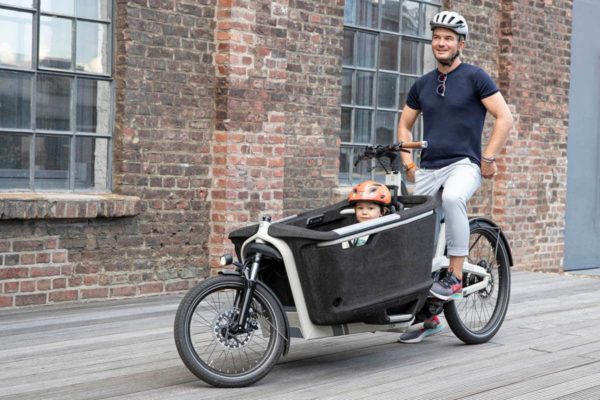
3. Safe standing and safe riding
The safety concept continues with the riders. The FS 200 is basically a stepthrough. This means that even shorter people can get on and off the bike quite easily. A direct consequence of this design is the lowered bottom bracket. The bottom bracket is so close to the ground that the cranks are only 150 millimetres long. With longer versions, you would run the risk of dragging the pedal over the ground in every second bend. But the short crank arm compensates for this.
In combination with the flat seat angle, you can also comfortably reach the ground when you come to a stop with the bike – especially important if you are carrying children or a heavy load. Since the loading area is also not far from the ground, the centre of gravity of the Ca Go generally tends to be very low. The result is a comfortable, stable ride and cornering.
4. Skilful cornering
Despite its overall length of 2.70 metres, the cargo bike does not lack manoeuvrability. The cable-based steering allows the front wheel to turn through about 80 degrees. Thanks to the 20-inch front wheel, which is typical for a Longjohn, you can turn in one go even in small streets. When steering, you have to expect a more sluggish feel. The cable steering doesn’t quite reach the ease of a solution with a steering arm. This is not dramatic, at best a question of getting used to it.
To be on the safe side, you should check your position on the bike. After all, the FS 200 is only available in one frame size. And neither the height of the handlebars nor the angle of the Ergotec Integra-BK stem can be adjusted. So, the best way to find out how well you can reach the handlebars and thus how much control you have over the bike is to take a test ride.
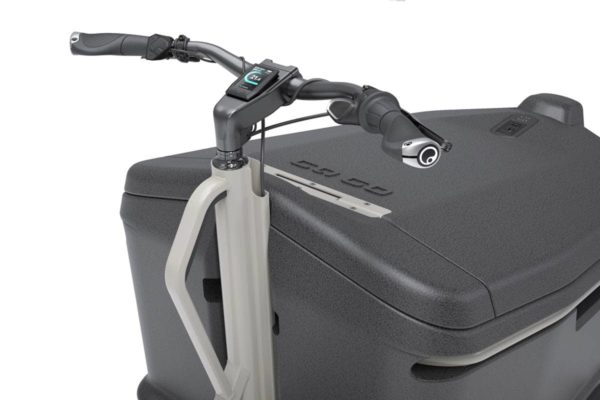
5. Top-level equipment
As a look at the other equipment reveals, the chances of a great riding experience are pretty good. Continuously variable automatic gears from Enviolo, Gates carbon belt with automatic tensioner, suspension fork from SR Suntour with 70 millimetres of travel, wide balloon tyres from Schwalbe with reasonable puncture protection and high-quality hydraulic CMe disc brakes from Magura with four brake pistons at the rear and two at the front – there are hardly any questions left unanswered.
The same applies to the electric drive. Ca Go has opted for the proven Cargo Line motor from Bosch. A torque of 85 Newton metres and up to 400 percent assistance are two key figures that promise a lot of riding fun. Especially since the manufacturer has not skimped on the battery solution either. A PowerTube with a capacity of 625 watt hours is installed. This should be good for a range of about 60 kilometres. If that’s not enough, you can also choose the DualBattery option and double the total.
Considering the pictures, some of you may have wondered where the batteries are actually located. They are in a special metal compartment in the bottom of the Cargobox. Before you remove the batteries, however, you have to empty the Cargobox, remove the floor mat and unlock the compartment with a key. This is a bit more work than simply detaching a battery that is clicked into place on the outside of the frame. However, you can also use a socket directly on the frame for charging. You will find it near the point where the down tube meets the head tube.
6. Good value, but no bargain
All in all, many things about the Ca Go FS 200 sound very promising. In regard to the price, however, you should first think about what you mainly want to use the bike for. Of course, it is a cargo bike. But many solutions are specifically designed for transporting children. Many of the extensions announced for the autumn, such as the All-Weather-Top sun and rain cover, also point in this direction. The basic price of currently 6,950 Euros seems to us to be quite fair for the quality offered. If you are more inclined to use it purely as a cargo bike, you might want to ask yourself whether something less expensive would be suitable.
In any case, Ca Go aggressively assumes the role of a premium manufacturer. In an interview with the bicycle magazine “Velototal”, the company once said the following: “To be clear – a modern and safe e-cargo bike costs its money to develop and manufacture, which has to be reflected in the price of the products in order to in turn develop new products and maintain quality.” Using the money from the sale of bicycles to make even better bicycles – that sounds like a sensible approach. Ca Go will have to be judged on this in the future.
Pictures: Ca Go Bike GmbH
